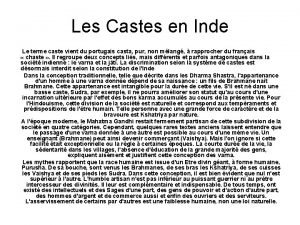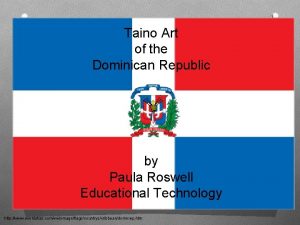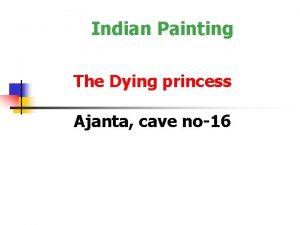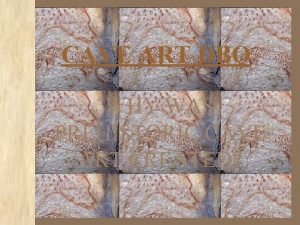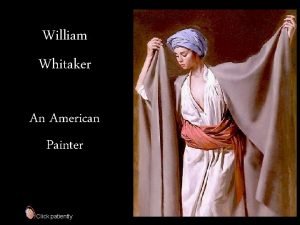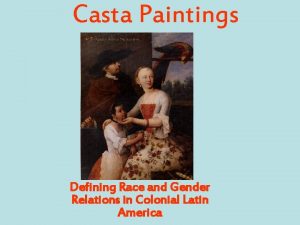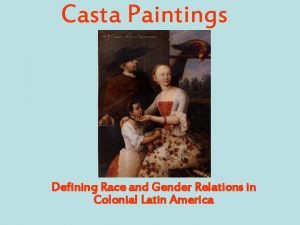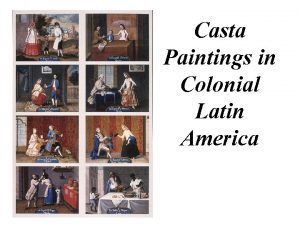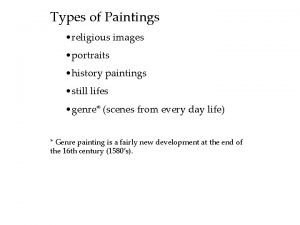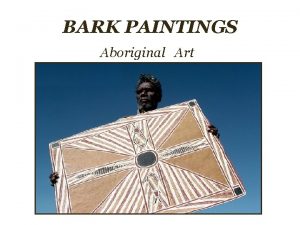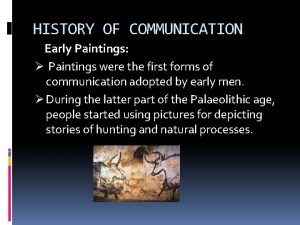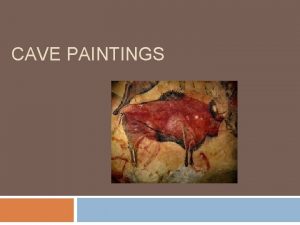Casta Paintings Defining Race and Race Relations in




























- Slides: 28

Casta Paintings Defining Race and Race Relations in Colonial Mexico

Casta is an Iberian word meaning “lineage”, “breed” or “race”. It is derived from the older Latin word castus, “chaste”, implying that the lineage has been kept pure.

Defining castas in Mexico • In the years following the conquest of Mexico, most people fell into three distinct ethnoracial categories: Nahuas (indigenous people), peninsular Spaniards, or Africans (both enslaved and free). • By the early 17 th century, these categories broke down quickly and castas were being defined. Some estimates place the total number of castas in use in colonial Mexico at sixty or more.

Casta Paintings Casta paintings are part of the 18 th century artistic tradition of Colonial Mexico. These generally appear in groups of sixteen portraits that trace the complex racial mixing or mestizaje of the people in New Spain. Each painting depicts a couple along with one or two children. An inscription describing the ethnoracial make up of the mother, the father, and the child(ren) usually appears above the family.

As you look at the following casta paintings, think about… What details do you observe? What do these reveal in terms of attitudes toward the mixed component of the colonial population?















What do these Casta Paintings show?

What do Casta Paintings show? Paintings suggest typical clothing for different social classes

• Reveal details of architectural space and home life • Present meticulous depictions of everyday objects, native flora and fauna, and foodstuffs



What was the purpose of these paintings? • Some have linked the emphasis on classification and organization to the influence of the Enlightenment • It has been suggested that the meticulous depictions speaks not only the Spanish fascination with race, but also to the leading philosophical and scientific preoccupations of the time

Souvenirs of the “New World” • Because the majority of Casta Paintings still in existence were found in Spain rather than Mexico, it has also been suggested that these were meant as souvenirs • These may have been mementos that captured the newness of the “New World”, showing native plants and diverse peoples of the region

Interest in Daily Life • Others have linked this artistic tradition to trends in Spanish art • It is believed that Casta Paintings were influenced by Costumbrismo, an artistic movement that represented daily life and ordinary circumstances

Maintaining social and political control in Colonial New Spain Although the use and purpose for production of Casta Paintings remains uncertain, these generally suggest the fascination with race and limpieza de sangre (purity of blood) that characterized colonial mentalities. Spaniards used their elaborate system of classification to maintain social and political control, allowing the “pureblooded” to hold the top position in colonial society.
 Non defining
Non defining Relative clauses defining and non defining
Relative clauses defining and non defining Defining non defining relative clauses
Defining non defining relative clauses Defining relative clause meaning in telugu
Defining relative clause meaning in telugu Defining non defining relative clause
Defining non defining relative clause Relative clauses
Relative clauses Emilio eusebio
Emilio eusebio Varna inde
Varna inde Illud in his rebus vereor analisi
Illud in his rebus vereor analisi Te me mueres de casta y de sencilla
Te me mueres de casta y de sencilla Hindu caste system
Hindu caste system Casta system
Casta system Impulse and reaction turbine difference
Impulse and reaction turbine difference Types of spillway
Types of spillway Data race vs race condition
Data race vs race condition Nadir of race relations
Nadir of race relations Employee relations in public relations
Employee relations in public relations Romeo and juliet paint
Romeo and juliet paint Yuri gorbachev paintings
Yuri gorbachev paintings Heer ranjha painting by ustad allah baksh
Heer ranjha painting by ustad allah baksh Dominican taino art
Dominican taino art Dying princess ajanta paintings
Dying princess ajanta paintings Classical greek art characteristics
Classical greek art characteristics Fauvist still life
Fauvist still life Cosquer cave paintings
Cosquer cave paintings Cosquer cave
Cosquer cave Chuck baird
Chuck baird Alavokitesvara
Alavokitesvara William whitaker paintings
William whitaker paintings







